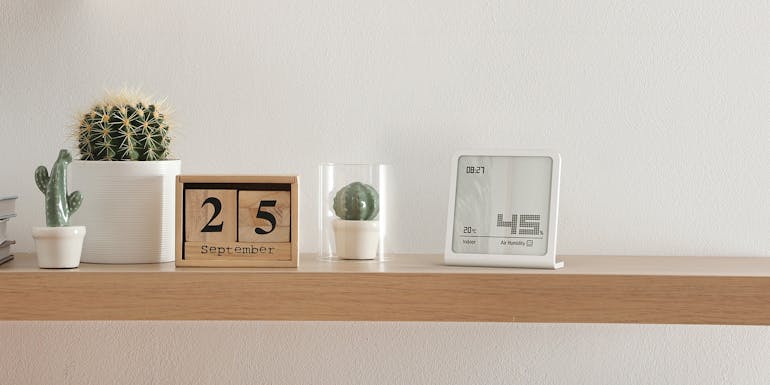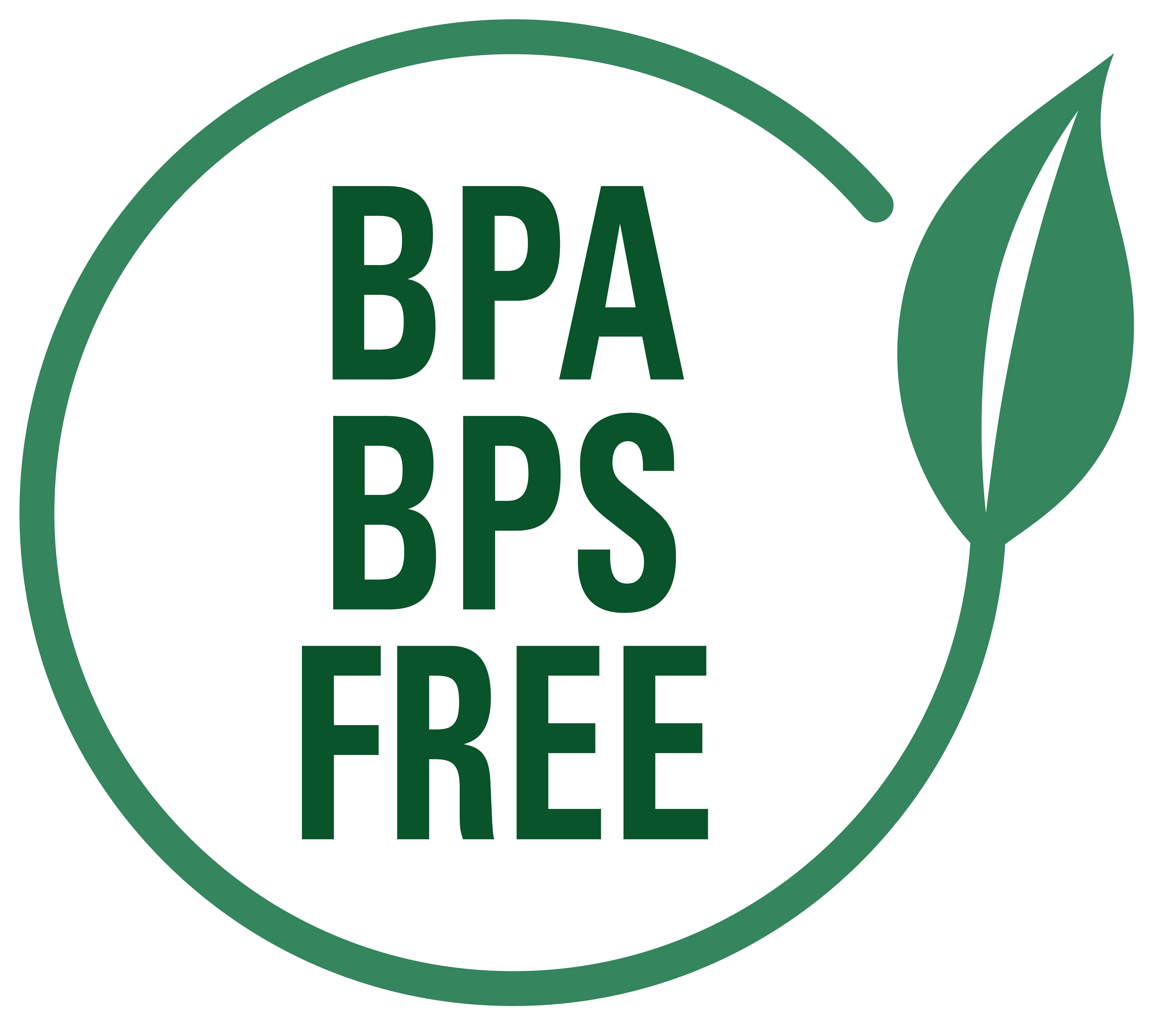
Claudia Eidenberg , 6 septembre 2022
Humidifier l’air
Humidifier terminology explained simply
Anyone who has to deal with the subject of humidity and humidifiers will come across a whole raft of different technical terms. What do they all mean and what do I really need to know? We introduce you to the most important terms and explain what they mean below.
Humidifying
If the relative humidity drops below 40%, we talk about dry air. Dry air is unpleasant and unhealthy. That means that we have to help and add additional moisture to the air, i.e. humidify it. We used to dry our wet washing indoors or put bowls of water on radiators. However, those are only short-term solutions. Humidifiers that humidify the dry air constantly and keep it at a pleasant level are more effective.
Humidification performance
Humidification performance indicates output, i.e. the amount of water that the humidifier can release into the air per hour. It is calculated in grams, millilitres or litres per hour.
Humidification systems
Not all humidifiers are the same. The function may always be the same but designs vary. We distinguish between the following systems:
Vaporiser – similar to a kettle, with the water being heated in the device. Boiling kills bacteria immediately, producing sterile water vapour. The vapour humidifies the air. This system is particularly suitable for allergy sufferers.
Ultrasonic nebuliser – turns water into mist. The ultrasonic membrane in the device splits water into tiny droplets and a fan inside the device blows them into the air where they evaporate, humidifying the air.
Evaporator – works in accordance with the natural principle of evaporation as its name suggests. A fan directs the dry indoor air through the water-saturated humidifier filters. In the process, the air only absorbs as much humidity as it needs for the current temperature. Evaporators are highly energy-efficient and therefore extremely popular.
Air washer – a combination of humidifier and air purifier. The water evaporates with this device too, making it very energy-efficient. But instead of filters, specially designed plastic discs that rotate in the water trough of the device are used. The air is drawn in by a fan and directed across these discs. Impurities (particles, pollen, dust or hair) attach themselves to these and are washed out in the water. The clean humidified air is then emitted back into the room.
Click here to find out more about the subject of humidification systems.
Hygrometers
Without aids, it is often difficult to tell whether your level of humidity is optimal. The hygrometer is an extremely useful tool for determining the relative humidity in a room. It measures the percentage of water vapour in the air continuously as well as the temperature in a room. So you can tell how good your indoor climate is at a glance.
Still don’t have a hygrometer at home? Click here to find out about our two hygrometer ladies.
Hygrostat
A hygrostat is a controller for bringing the humidity to a desired value and keeping it at that level. It uses a sensor to measure the humidity continuously, leaves the humidifier running until the desired level of humidity has been reached and then switches the device off. If the humidity falls below the set target value, the hygrostat will put the device into operation again.
Room size
To be able to choose the right humidifier, it is important to know how big the room to be humidified is. Area is calculated by multiplying the length of the room by the width and then multiply the result by the room height to get the volume. If the room is not a closed space (e.g. by doors leading to adjoining rooms), that area must be added on as the humidity is distributed. Important: In the case of Minergie houses (low energy or passive houses), calculations are based on twice the room size as a lot of humidity is lost again due to the constant ventilation.
Indoor climate
The indoor climate is a major factor when it comes to well-being within your own four walls. Smells, temperature fluctuations or draughts are picked up very quickly. On the other hand, without an aid like a hygrometer, changes in humidity are only noticed over a long period of time or physical symptoms are not linked to the indoor climate. If the air is too dry, it can lead to a range of complaints including respiratory problems, dry mucous membranes and sleep disorders while air that is too damp can promote the growth of mould in the long term. We recommend relative humidity of 40–60 per cent for an optimal indoor climate.
Relative humidity
The best-known unit of measurement is relative humidity. It describes, in the form of a percentage, the proportion of the water which is present in the air at a certain temperature in relation to the maximum quantity that can be absorbed. For use at home, that is all you need to know about this.
Here you can find out more about the subject of relative humidity.
Water hardness
Water hardness refers to the percentage of minerals (predominantly magnesium and calcium) present in the water. The higher the percentage, the harder the water. The degree of hardness is expressed in German hardness (° dH). We have four ranges of hardness: soft (from 4° dH), medium hard (from 7° dH), hard (14° dH) and very hard (from 21° dH). Water hardness has a decisive influence when you are choosing a humidifier system. While humidifiers that operate in accordance with the principle of evaporation can be used with all water hardnesses, we do not recommend using an ultrasonic humidifier or vaporiser with hard water. The minerals contained in the water would cause limescale to build up in the device within a short space of time so that the device could no longer be guaranteed to work properly.
Are you unsure about the quality or composition of your water at home? Your caretaker or local drinking water supplier will be happy to provide you with detailed information on this.
Water softening systems
A lot of domestic water softening systems work in accordance with the principle of ion exchange – salt is added to the water and thus exchanged for minerals. When you use an ultrasonic nebuliser, the salt contained in the water can be deposited as white dust on furniture. The salt, like limescale, accumulates in the device and has to be removed on a regular basis.
Demineralisation – removes not only the minerals that cause hardness but also any ions at the same time. This method is used when pure water is required such as e.g. distilled water. The water from such systems is not suitable for vaporisers and ultrasonic nebulisers. We recommend either an evaporator or an air washer in that case.
If you have questions related to indoor room climate, please get in touch with us. Or subscribe to our newsletter to regularly get informed about current topics regarding indoor climate, experience reports or Stadler Form insights.





























